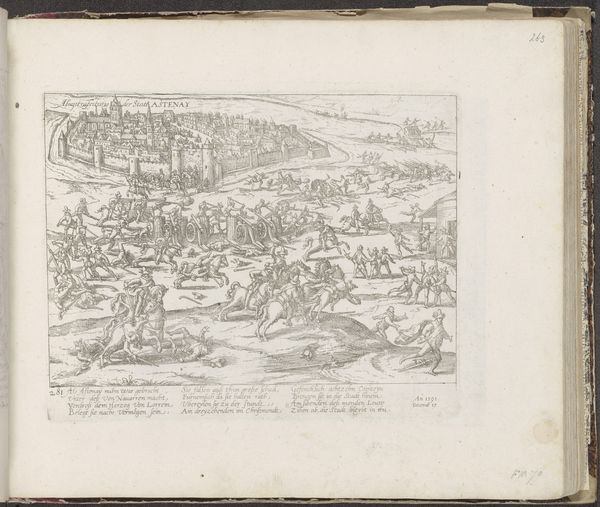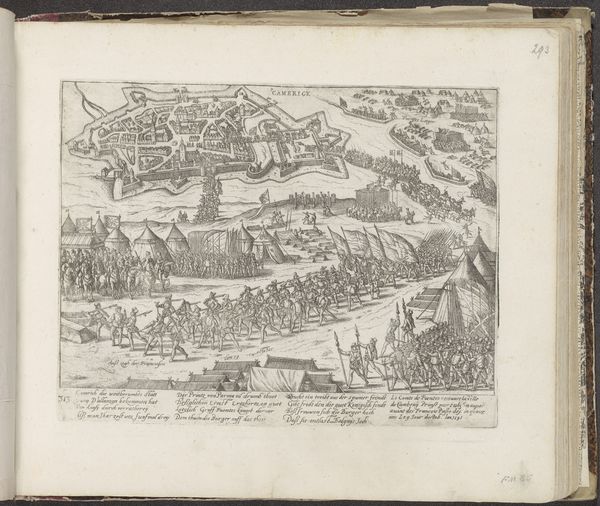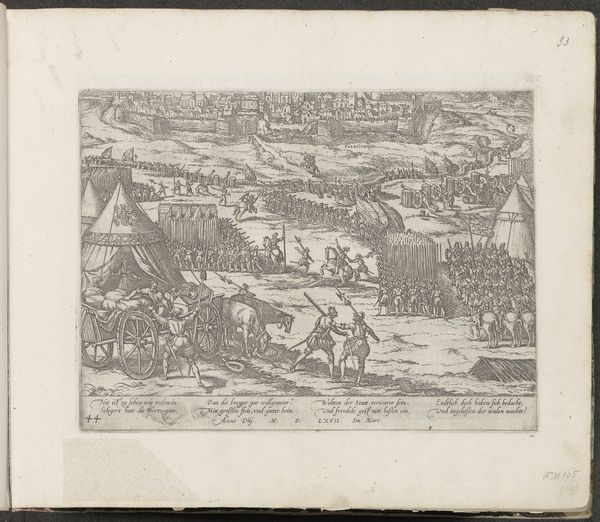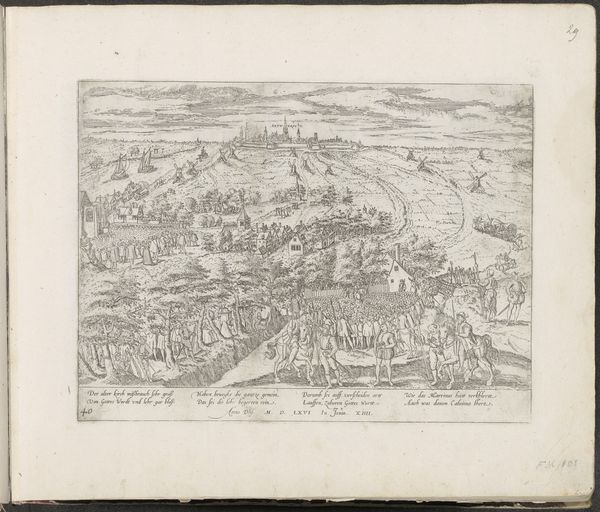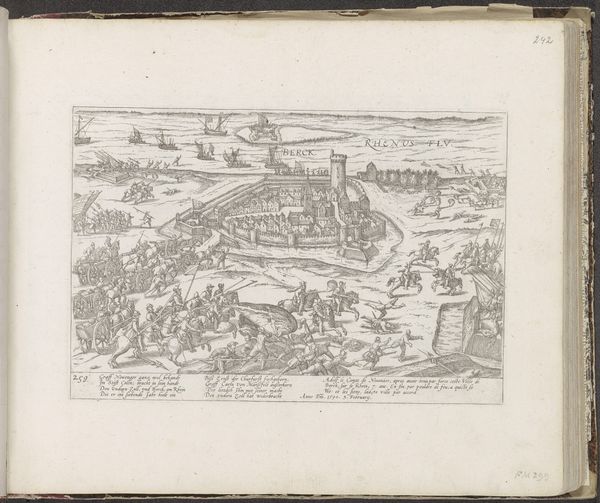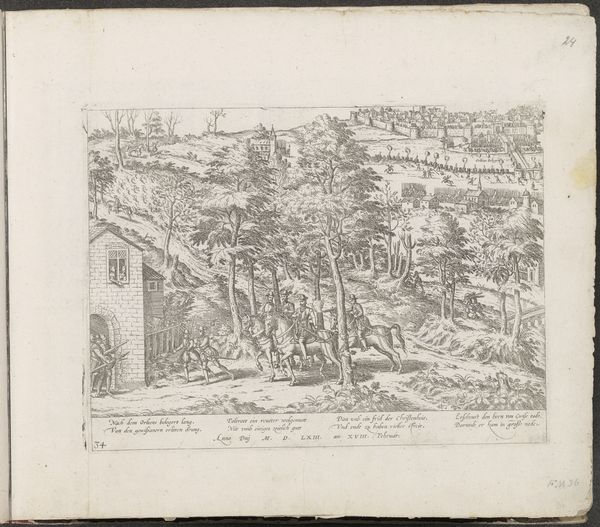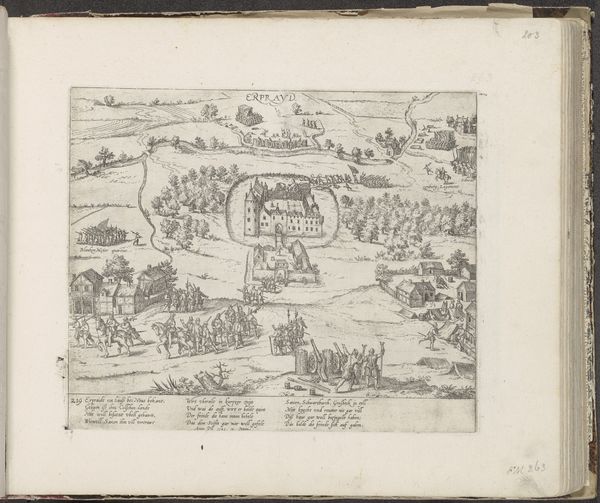
drawing, print, ink, engraving
#
drawing
#
pen drawing
# print
#
ink
#
genre-painting
#
history-painting
#
northern-renaissance
#
engraving
Dimensions: height 216 mm, width 283 mm
Copyright: Rijks Museum: Open Domain
Curator: Here we have an engraving, dating from around 1581-1585, by Frans Hogenberg. It's titled "Slag bij Gembloers, 1578," which translates to "Battle of Gembloux, 1578." It is rendered with ink and is an example of a print. Editor: Wow, it's a visual feast of chaos! All these tiny figures embroiled in what looks like total pandemonium, a whirlwind of sharpened objects and frenzied movement frozen in time, if that even makes sense. What do you think, material-wise, contributed to the feeling the artwork provokes? Curator: The medium itself, engraving, lends a distinct quality. Think about the labor-intensive process: the artist meticulously incising lines into a metal plate, the repetitive action, and the inherent constraints of the technique. It emphasizes a very labor intensive image making tradition. Also how affordable it must have been to disseminate images during the time it was created. Editor: Definitely, you can almost feel the artist’s hand at work! The detail achieved with those fine lines is astounding. And speaking of affordability: the idea that a battle scene – so grand, so pivotal – could be reproduced and circulated… it's incredibly potent. But, back to the emotional tone, something about the uniformity, almost a flatness to it, desensitizes the viewer to the visceral horrors of the subject depicted in this way. Don’t you think? Curator: Indeed. By distributing imagery about conflicts like these in this printed format to a wide viewership suggests that one outcome of artmaking itself, during such an historical moment, was that its proliferation became something that normalised conflicts itself. The battle of Gembloux was itself a crushing defeat. Editor: It’s a funny old world when art and war become bedfellows. It strikes me though that its desensitizing flatness makes it digestible and educational by equal measure, even entertaining – although I admit a guilty tinge comes over me as I say it! Thanks for pointing me towards those avenues to better appreciate this scene. Curator: Of course! Delving into these art historical and process-based elements reveals some powerful context. I think examining an image of this kind with its laborious artmaking and subsequent viewership only heightens the very themes that are also at work during such tumultuous times.
Comments
No comments
Be the first to comment and join the conversation on the ultimate creative platform.
